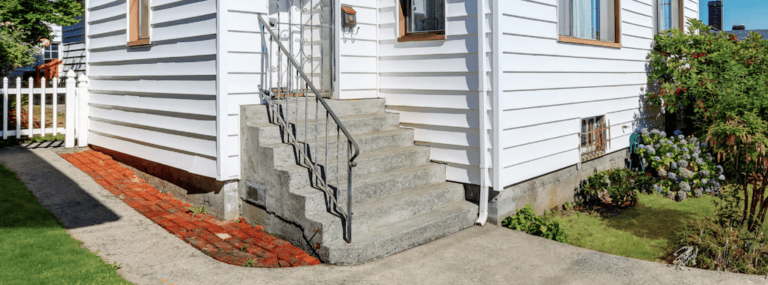- Am I living in an area prone to earthquakes?
Find out if you live in a moderate or high seismic area. Call your local building department and ask if you are in Seismic Design Category D, E or F. You can also visit the U.S. Geological Survey website and review its seismic hazard maps at https://earthquake.usgs.gov/hazards/hazmaps/. - Was my home built before 1985?
Homes built before 1985 are typically more vulnerable to earthquake damage. Most homes built after 1985 have been designed to conform to stricter building codes and are most likely better equipped to resist the force of an earthquake. - Is my home built on a raised foundation?
If your house is not built on a concrete slab, chances are it’s built on a raised foundation (these homes typically have a crawl space). This supporting structure under the house may not have been built to resist seismic forces and can be highly susceptible to structural failure in an earthquake.
- Is my home built on a hillside?
Homes built on a hillside typically have raised foundations and tend to have more severe failures because the structural framing supporting the house — posts and cripple walls — varies in height. - Do I have a garage?
Garage door openings create vulnerable areas in a house. The narrow walls on either side of the garage door must be carefully designed to resist earthquake forces. This is extremely important if there is a living space above the garage because living spaces typically add weight that the garage framing must support. (Note: If you live in an older home on a hillside or with a living space above the garage, you’ll need to consult with a licensed structural engineer for design solutions.)
If you do decide to seismic retrofit your home, be sure to consult our step-by-step guide for retrofitting your home for earthquakes. Also, check with your local government to see what sort of grant programs might be available. For example, the State of California’s Earthquake Brace and Bolt program offers grants up to $3,000 for qualifying homeowners.


